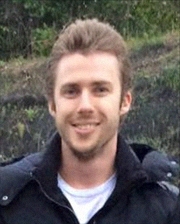Tutor HuntResources Neuroscience Resources
Microelectrode Techniques Workshop Application
Successful application to a highly competitive electrophysiology course
Date : 13/10/2015
Author Information

Uploaded by : Nicholas
Uploaded on : 13/10/2015
Subject : Neuroscience
My work in Dr Joerg Albert's lab at UCL primarily focuses on the molecular characterization of mechanotransduction in the Drosophila auditory Johnston's Organ, identifying the sites of action of neuroactive insecticides as well as investigating the organ's homeostasis. I mainly utilise a combination of pharmacological and genetic approaches in combination with biomechanical and electrophysiological analysis of the organ's function. Laser Doppler Vibrometry in coordination with electrostatic actuation of the antenna and extracellular electrophysiology (via sharp tungsten electrodes) from the antennal nerve; facilitates very sensitive functional assessments of the fly's hearing apparatus. These approaches, combined with pharmacological profiling using neuro-active compounds, allow powerful insight into the fly's auditory transduction system.
To learn more about which genes are key to transduction I will soon begin expressing candidate mechanosensitive ion channels in a heterologous cell system. Patch clamping the transfected cells and testing drug effects is then expected to give insight into channel function and the specific contribution of different genes. I have experience making successful whole-cell recordings from HEK cells transfected with the mammalian voltage-gated potassium channel, KV1.2 (example data can be seen in Figure 2).
Perhaps the most exciting use for the skills I would learn at the Microelectrode Techniques course would be to record from an ex vivo culture of the fly's antennal organ I am soon to begin working with. I plan to culture extracted eye-antennal imaginal discs and the possibility to record from various populations of neurons and support cells would be extremely valuable to my work, my lab and the field as a whole. It is also a continuing ambition of my work to attempt in situ patch clamp recordings from neurons in a living fly's JO. My efforts to obtain these recordings are on-going. I have been able to physically access the target neurons but am yet to successfully patch them (Figure 1).
Generally the skills I would learn on this course would be hugely valuable to me and all members of my lab and concerning the main aims of my work, the chance to learn techniques for patching in challenging environments (such as slices) would open many promising opportunities to build on the recent success we have had in Dr. Albert's lab.
This resource was uploaded by: Nicholas
